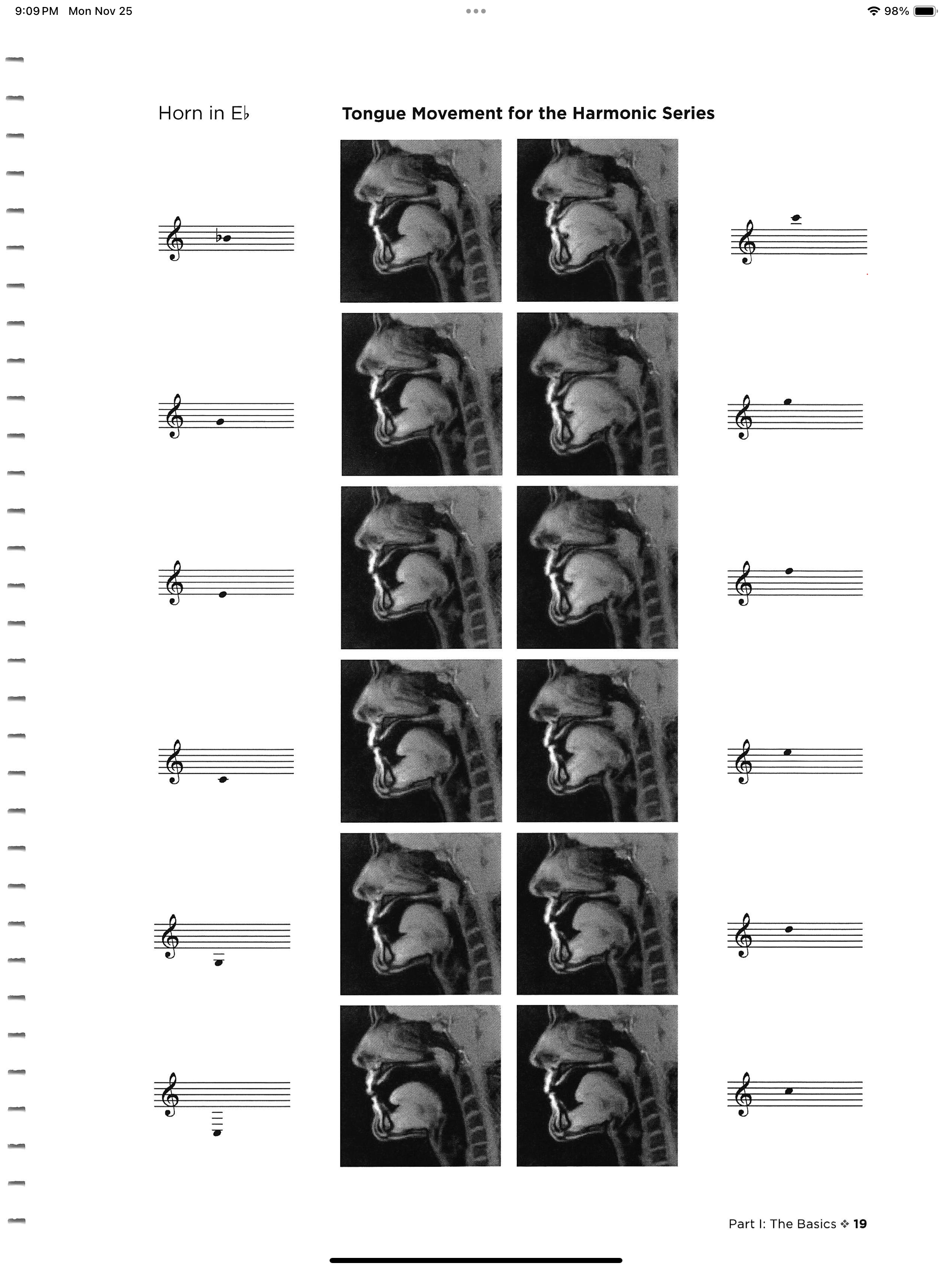
Essential Question: What is the role of the tongue in brass playing?
The tongue is a dynamic and versatile tool for brass players, functioning as a key element in shaping sound, articulation, and expression. Mastery of its role allows for a polished, professional performance. Here are a few of the tongue’s roles and ways to improve your control:
The tongue plays a critical role in brass playing, influencing articulation, tone production, and overall technique. Its position, movement, and coordination with the breath are essential for precise and expressive brass performance. Below are the primary roles of the tongue in brass playing:
1. Articulation
The tongue is the primary tool for initiating and defining notes.
Tongue stroke is forward and back ( or up and down). The tongue motion reverses direction as it hits the contact point, interrupting the air (but not stop the air) to create the articulation.
The point of contact may vary depending on the range. Experiment with a lower point of contact on the teeth (or even between the lips) for lower notes.
Remember, "the tongue does not make sound". Enough air must be backing up the articulation to sound the note. Think "tHah". Imagine the tongue is surfing the airstream, not blocking the airstream.
By interrupting or shaping the airflow, it creates various types of attacks and articulations:
Single Tonguing: Using "ta," "da," syllables for clear, crisp note starts.
Double Tonguing: Alternating between "ta" and "ka" (or "da" and "ga") to play rapid passages.
Practice saying it first without the instrument: too-koo-too-koo or tah-kah-tah-kah
Keep the vowel forward in your mouth like in the French word "peu"
You can soften the consonant by using D instead of T
Triple Tonguing: Using patterns like "ta-ta-ka" or "da-da-ga" for even faster sequences.
Practice saying it first without the instrument: too-too-koo-too-too-koo or tah-tah-kah-tah-tah-kah
Keep the vowel forward in your mouth like in the French word "peu"
You can soften the consonant by using D instead of T
Legato Articulations: A softer use of the tongue to connect notes smoothly. Legato tonguing is a common technique in all instruments, but it is especially important for trombone players since a true slur is impossible across a slide change.
2. Shaping the Air Column
The tongue helps shape the air column inside the mouth, affecting tone quality and pitch.
Higher Notes: The tongue arches upward (as in saying "ee") to focus and speed up the airflow.
Lower Notes: The tongue flattens or lowers (as in saying "ah") to allow a broader, slower airflow.
3. Controlling Airflow and Dynamics
The tongue regulates the amount and direction of airflow, contributing to dynamic control and consistency in tone.
Smooth transitions between dynamics often require subtle tongue adjustments to manage the air efficiently.
4. Coordination with Embouchure
The tongue works in conjunction with the embouchure and breath support to ensure seamless transitions between notes.
The breath, buzz, and tongue must be exactly synchronized. Breathing in tempo and subdividing will help synchronize.
Poor tongue coordination can disrupt tone stability and pitch accuracy.
5. Facilitating Smooth Slurs
During legato passages, the tongue minimizes disruption to the airflow, allowing smooth connections between notes.
Slight tongue adjustments can assist in clarifying slurs and even help facilitate lip trills.
6. Assisting in Range Development
The tongue's position is crucial for extending both high and low ranges:
High range: Requires an arched tongue to narrow and direct the air column.
Low range: Calls for a more relaxed, lowered tongue position for a fuller, slower air stream.
7. Consistency in Tone and Intonation
Proper tongue placement ensures consistent tone quality and intonation across the instrument's range.
Incorrect tongue positioning can lead to instability in sound or pitch.
Common Challenges with the Tongue:
Excessive Tongue Pressure or Tension: Can create a harsh tone or disrupt airflow.
Poor Coordination: Leads to sloppy articulation or unclear note starts.
Overuse of the Tongue: Can result in fatigue or tension, reducing efficiency.
Strategies for Improving Tongue Technique:
Slow Practice: Work on clean, precise articulation with scales and simple exercises.
Syllable Awareness: Experiment with different syllables ("ta," "da," "ka," etc.) to find the most natural and effective articulation for different passages. The faster the speed, the shorter the stroke must be. Usually Da da da is faster than Ta ta ta. Use the "top of the tip of the tongue" for fast single tonguing. Try saying that three times fast.
Tongue Placement Exercises: Use long tones and slurs to focus on how tongue arch position affects sound and airflow. Think about changing vowel sounds across wider intervals.
Articulation Drills: Practice single, double, and triple tonguing at various tempos to improve clarity and speed.
Always Remember: The AIR is the Manager!
The Tongue is just a low-level worker who aspires to take charge. Don’t let it!
Useful Metaphor
Imagine a faucet with a strong stream of water coming out.
Imagine your hand going in and out of that water stream.
Just like the water never stops flowing, your air must always keep blowing.
MRI of Trombonist Doug Yeo multiple tonguing
Is a lip-trill really a tongue trill?
Research shows that most brass players utilize tongue movements to efficiently oscillate between adjacent harmonics. Check out the MRI videos below. Try thinking “ooo-eee-ooo-eee” along with an accelerating air speed next time you work on lip trills.

